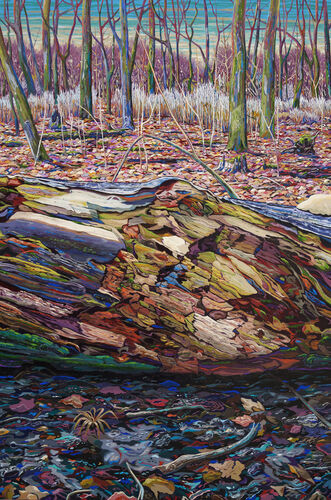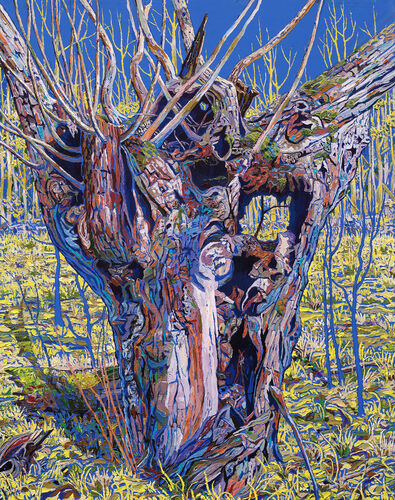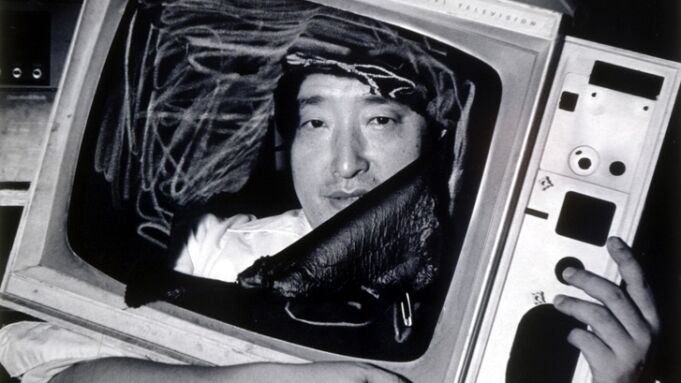
These Korean artists you should know
Since the last Frieze Art Fair 2022 in Seoul, it is probably clear to everyone that South Korea can do much more than K-Pop. The international fair was held for the first time in Asia at the beginning of September simultaneously with the KIAF (Korea International Art Fair). The fact that the South Korean capital was chosen as the venue is testimony to the long overdue recognition paid to the country's impressive art history.
Here we give an overview of the most interesting current artists of South Korea, which you will surely hear about in the future.

South Korean contemporary art is a conglomeration of Western and Eastern influences, with the country's history being given an active role. For example, the impulses of the conceptual artists of the 1980s and '90s, such as Nam June Paik, Lee Bul and Kang Ikjoong, have a constant impact. Their goal was for viewers to question and rethink their own reality on topics such as gender roles, identity, language, or culture.
Monochrome paintings of the 1960s - 70s line up to this movement, in which some artists are still an active part in the art scene today. The most notable among them, such as Park Seo Bo, Kim Whanki or Lee Ufan enjoy international appreciation.
Nowadays it is very difficult to speak of »one« Korean art, because the country and its artists have been opened in all directions since a long time and brought forth exciting, individual positions, which we would like to present you here.
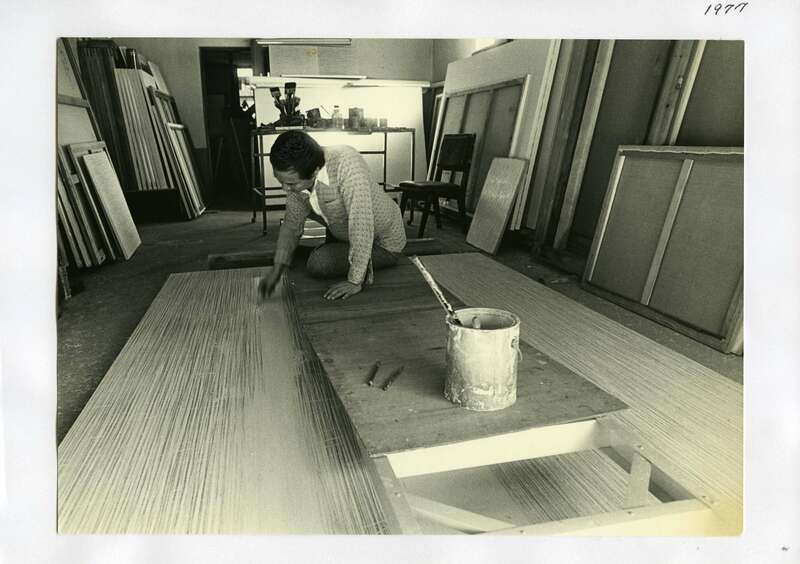
1950 - 70: Informal art and monochrome painting
After 1945, the Japanese occupiers had to leave Korea as one of the losers of the Second World War. But already in 1950 the Korean War followed, which brought the division of the country and profound changes in art and culture: While North Korea enforced socialist realism, South Korea adopted many characteristics from Western art - especially from the U.S. and Europe, which can also be seen in its lively participation in international art exhibitions and biennials. As a result, starting in the mid-1950s, many South Korean artists turned to »Informel« or »lyrical abstraction.« This very free, spontaneous way of working, which among other things borrows from abstract expressionism, can be interpreted as an individual retreat of the artists due to the tensions and conflicts in the country. Often, poetic titles were given to the works, as in the case of Kim Whanki. Yoo Youngkuk used highly abstracted depictions of the Korean landscape, whereas artists such as Kim Tschang Yeul focused on traces of human activity, using industrial materials such as iron or welding marks, or focusing on brushwork. As in Europe and the U.S., they now turned to everyday objects to explore their value as art objects. Installations, happenings, film, and photography were now used as art forms in Korea, too. In addition, the question of one's own cultural identity became louder. A possible answer was found in the highly reduced, monochrome works of the Dansaekhwa artists. The emphasis is here on the haptic qualities of these strongly reduced works, which are often processed by a repetitive movement. The canvas is not understood as a picture carrier, but as a medium that bears the traces of the artist's existence. Artists of the Dansaekhwa-style were for exampleHa Chong Hyun, Chung Sang Hwa and Lee Kun Yong - today Lee Ufan is the best known among them.
The painter Park Seo Bo is one of the still active artists of this style. In his well-known Écriture works, which he has been developing since the 1960s and which have their origins in Taoism and calligraphy, the artist literally »writes« himself into his artworks. He uses mostly pencils, which he strokes with rhythmically repeating movements over the paper (since 1983 Hanji or mulberry paper) and thus creates strictly reduced pictorial spaces that invite for contemplation.
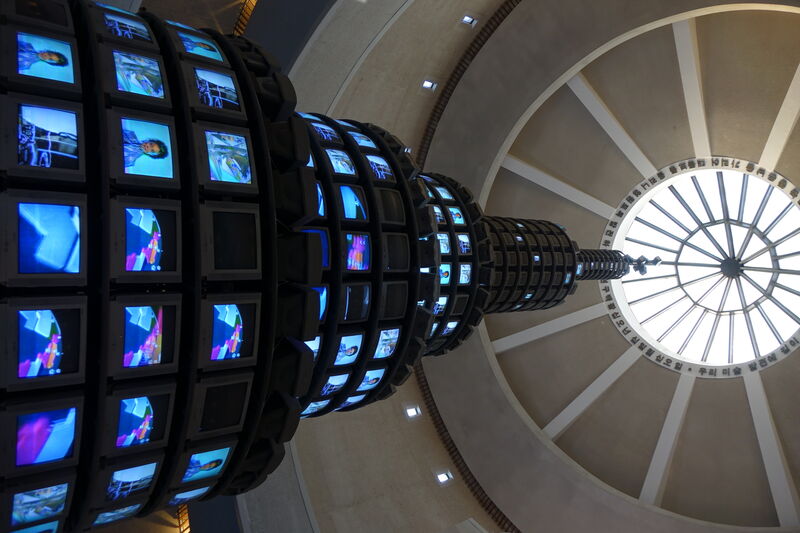
1980s: Hyperrealism
From 1980, artists increasingly turned to figurative painting, video and film art. The Minjung Misul (visual/ folk art) movement, which was dedicated to social issues such as the violent suppression of student protests or the dark side of the country's rapid industrialization, played a prominent role in this development. The goal of this movement was for art to reconnect with current events. One medium that many artists used was hyperrealism, beginning in the late 1970s/early 1980s. Typical of this style was the deceptively real imitation of landscapes or portraits of people, such as those by Kim Chang Young, Ju Tae Seok, Ji Seok Cheol, Kim Kang Yong or Ko Young Hoon.

1990s: Eastern perspectives in a global context
Kimsooja is known for her elaborate installations – one of her most impressive works was the performance "Cities on the Move - 2,727 Kilometers Bottari Truck" (1997), in which a truck loaded with bundles of fabric was parked in many museums and exhibition spaces in Europe and Asia. The bundles (in Korean "bottari") contain worn clothing and bedding that the artist had collected in a long journey through South Korea. She thus thematized the traditional Korean way in which all kinds of objects are wrapped in cloths for transport. Even babies, sick or dead people were typically transported in this way. Sooja's installation specifically showed such bundles left in homes by people who had fled for political reasons. The smell of the fabrics testifies to the presence and at the same time to the absence of the people who used to carry their belongings in the bundles and then left them behind. At the same time, the bundle symbolizes the whole world, because a person's entire life can be packed into it.
With this work, Kimsooja confronted the Western art world with her own, thoroughly global view, in which she nevertheless takes up a Korean problem. By emphasizing the sensory qualities of the installation, the artist makes the subject particularly tangible for people from other cultural backgrounds.
More recent works, which also bring together an emphatically Far Eastern point of view with a global perspective, are by the artists Young Ju Joung and Kim Min Jung. For example, Young Ju Joung »builds« traditional East Asian cities with pasty paint application on canvas, which she knows from her childhood. Due to an higher perspective, only the roofs of the houses are always recognizable - she never depicts people. Nevertheless, the brightly lit windows of the houses testify to their inhabitants, and a calm, cozy, homely mood makes itself felt when looking at them. It is interesting that this feeling is independent of the origin of the viewer, the artist seems to have found a simple narrative that dissolves the boundaries of cultural imprints.
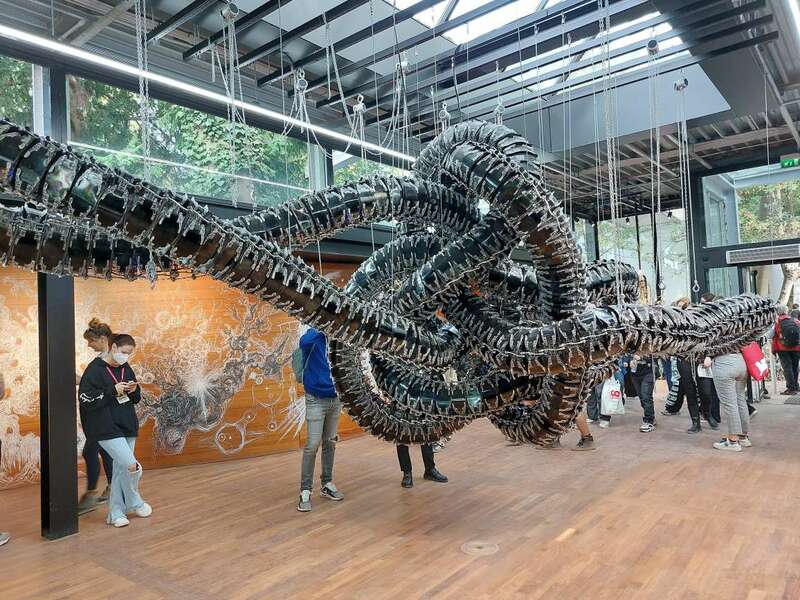
2000 until today: New media - new perspectives
Things are far more turbulent for some artists who have devoted themselves since the 2000s to the topics and subjects of the rapidly spreading pop culture: Lee Jee Young, Choi Xooang, or Choi Jeong Moon confront viewers with truly hypnotic works.
The flood of impressions from the television, fashion, and music industries increasingly finds an outlet in inter- or trandisciplinary art. This art form, in which visual and performing artists often collaborate, results in multifaceted connections between installation, sound, and movement. Particularly notable are the works of Yunchul Kim, which were on view at the 2022 Venice Biennale amoung other places. His machines, titled »Gyre« (2022), mimic the gliding movement of a human or animal creature in an astonishingly realistic way. Chemical substances flow in the limbs of the serpentine installations, permanently changing their appearance through the movement of the individual parts; at the same time, the room is filled with the monotonous mechanical sounds of the machines.
The German-based artist Yang Hae Gue works in a similar way. In her room-filling installations, she questions the way we deal with ordinary everyday objects and the notion and expectation attributed to them in different cultural contexts. Movement also plays a central role in Yang Hae Gue's works: in the performance »Moved by Schlemmer« (2022), for example, she has large figures hung with countless bells move through a room. It seems as if Oskar Schlemmer's »Triadic Ballet« was brought together with a traditional Korean shaman ritual. The result is extremely fascinating - regardless whether you look at it from an Eastern or Western perspective.
Dive deeper into the art world
»The Space Between. The Modern in Korean Art«
Over the past hundred years, Korea has been repeatedly influenced by external states - not only politically. The art of the respective countries also touched the techniques of the East Asian territory. With The Space Between. The Modern in Korean Art, LACMA will highlight this branch of modern Korean art history beginning Sept. 11.






